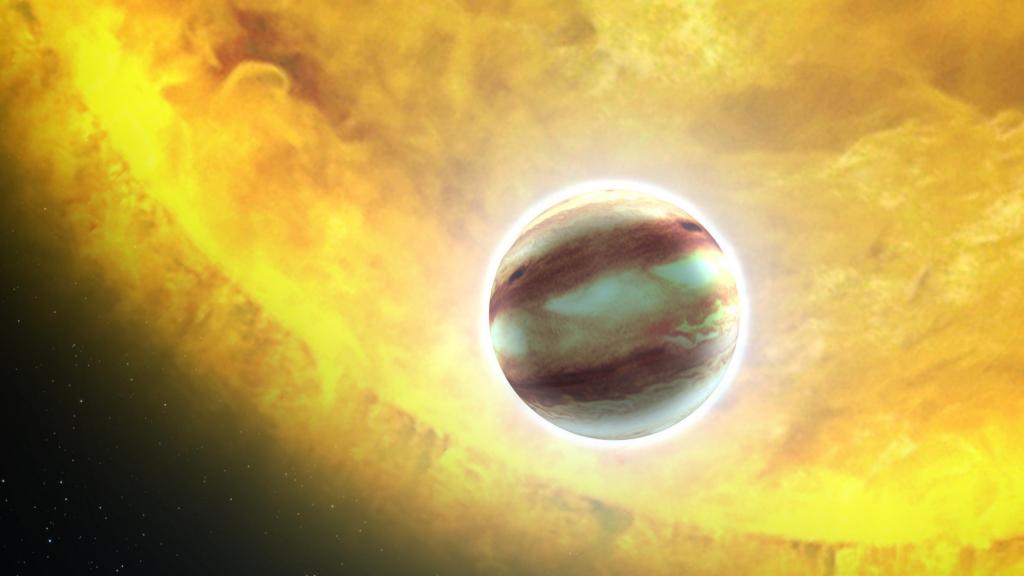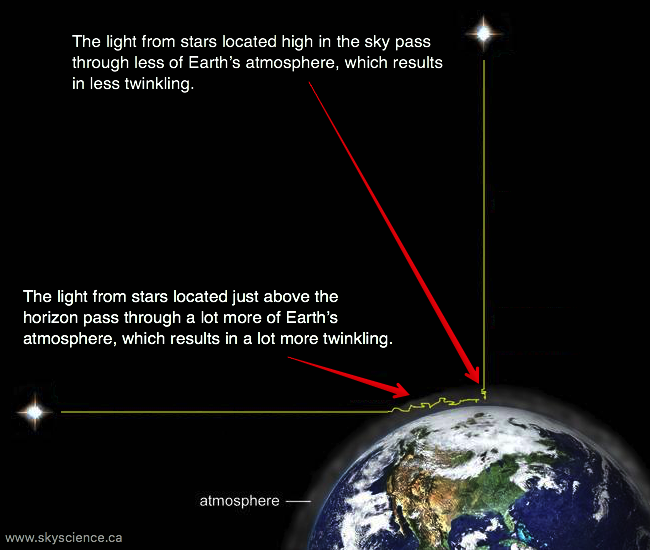|
Olivia is a grade 6 student from Calgary and she asked... What is a Hot Jupiter? When extrasolar planets first started to be discovered, about 20 years ago, calculations showed that many of them were big, like Jupiter. However, unlike Jupiter, these planets were orbiting extremely close to their stars and for that reason they were really hot. Several of these Jupiter-sized extrasolar planets were discovered early on and soon they formed a distinct category within the larger family of extrasolar planets. This category, or subclass, as astronomers refer to it, became known as the "Hot Jupiters" and that term is used to describe any Jupiter-sized extrasolar planet that is really hot, due to its close proximity to its parent star. An artist impression of a "Hot Jupiter" extrasolar planet orbiting its parent star.
0 Comments
Emily is a grade 6 student from Calgary and she asked... Why do stars twinkle? What we see as twinkling is really caused by air movements in Earth's atmosphere. Starlight enters the atmosphere as straight rays of light. Twinkling occurs because air movements constantly change the path of the light, making it wiggle, as it comes through the air. Stars that are located high in the sky, near the zenith, twinkle less than stars located near the horizon. The reason for this is because the light from stars located high overhead travels through a much smaller amount of the Earth's atmosphere, compared to stars that are located near the horizon. This can be seen in the image below. As a star rises higher in the sky, due to the Earth's rotation, the star will twinkle less than it did earlier in the evening. If you really want to see a star twinkle, check out Sirius on a winter night, shortly after it rises in the southeastern sky. Sirius is the brightest star seen in the night sky and on a cold crisp winter evening it can twinkle like a diamond in the sky. You will often see flashes of red, green, and blue light as you watch this star rise up into the sky. It really is an amazing sight, so be sure to check it out and show it to your friends and family too. Look for Sirius, also known as the "Dog Star" and Alpha Canis Majoris, rising up in the southeastern sky on the following dates.
Well, hello there and welcome to Ask an Astronomer. This section of the Sky Science website is devoted to answering your space questions. I know you have a lot of questions because I hear them every time I go visit a school with my AstroDome Planetarium. Sometimes there are just too many questions for me to answer during my 60-minute presentation and so now you can submit questions to me by completing the online form located here.
Please note that I may not be able to provide an answer to each and every question submitted. The simple reason for this is because there are about 48,000 students in Grade 6, here in Alberta, and many more across Canada, but there is only one of me! My apologies to you if your question goes unanswered, but I do hope that you enjoy reading the answers that have been provided here. Two weeks ago, the online form to submit questions was posted here at www.skyscience.ca and since then several questions have been received. Now, without further ado, it's time to start answering some of those questions! |
About MeThis blog is written by James Durbano. Currently, I am the Director of the Big Sky Observatory and I'm also the owner and operator of the awesome AstroDome Planetarium. Archives
January 2016
Categories |





 RSS Feed
RSS Feed